Six Ways To Test Your Overall Fitness
How does your fitness measure up? Test yourself and track your progress with these fitness tests
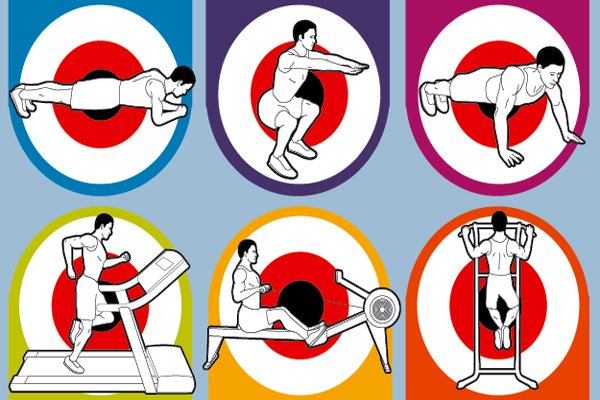
Been hitting the gym on a consistent basis for quite some time now and want to find out how much all your hard work has paid off? We've got six tests you can take to help you gauge your all-round fitness. You'll test your fitness in the following areas: co-ordination, explosiveness, endurance, power endurance, strength and agility.
Take these tests every two months and make a note of how well you perform each time to see how your fitness is improving.
If that's more depth than you wanted, don't fret, we've got a mini version below: six quick fitness tests that will give you an almost instant snapshot of your fitness levels and show you how well your fitness stacks up.
Quick Fitness Tests
Plank
What it targets: Your core strength
How to do it: Hold your body in a straight line from head to heels. Keep your feet together and your elbows beneath your shoulders. Look straight down and brace for as long as you can. Focus on keeping your hips from sagging. When they do the test is over.
| Time | Level |
|---|---|
| More than 2min | Excellent |
| 75sec–2min | Good |
| 45–75sec | Average |
| Less than 45sec | Poor |
To improve: Perform the plank with your hands, feet or both on an unstable surface such as a gym ball. You won’t be able to hold it for long, but it’ll make doing this test on stable ground easier.
Bodyweight squat
What it targets: Your core, quad and hamstring strength
Sign up for workout ideas, training advice, reviews of the latest gear and more.
How to do it: Keep your feet shoulder-width apart and toes turned out slightly. Brace your core and lower until your thighs are parallel to the floor and your knees are in line with your feet. Push back to the start through your heels. The test is over when you can’t maintain perfect form.
| Reps | Level |
|---|---|
| 50 or more | Excellent |
| 30–49 | Good |
| 16–29 | Average |
| 15 or fewer | Poor |
To improve: Perform walking lunges with light dumbbells to build muscular strength in your glutes and legs.
Press-up
What it targets: Your chest, shoulder and triceps strength
How to do it: Keep your body in a straight line and your elbows pointing back, not to the sides. Lower until your chest is a fist’s height off the floor, then push back up. The test is over when you can’t maintain perfect form.
| Reps | Level |
|---|---|
| 50 or more | Excellent |
| 25–49 | Good |
| 16–24 | Average |
| 15 or fewer | Poor |
To improve: Complete a set to failure, rest for a few minutes and start again. This will overload the targeted muscles, making them grow stronger.
1km run
What it targets: Your cardiovascular system
How to do it: Set the treadmill elevation to one degree. Keep a constant pace.
| Time | Level |
|---|---|
| 3min or less | Excellent |
| 3min–3min 29sec | Good |
| 3min 30sec–4min 29sec | Average |
| 4min 30sec or more | Poor |
To improve: Do sets of all-out sprints of between 500m and 800m to improve your ability to maintain a maximum speed for longer.
500m row
What it targets: Your cardiovascular system and muscle co-ordination between the upper and lower body
How to do it: On a rowing machine, select a low to medium resistance. Sit upright with your shoulders back and core braced. Drive with your legs. Brush up on your rowing technique if you need to.
| Time | Level |
|---|---|
| 1min 30 sec or less | Excellent |
| 1min 31sec–1min 44sec | Good |
| 1min 45sec–1min 59sec | Average |
| 2min or more | Poor |
To improve: Perform sets of max- effort 250m rows, separated by a few minutes of gentle rowing, to improve your endurance.
Pull-up
What it targets: Your upper back strength
How to do it: Grip the bar overhand, extend your arms fully and let your body hang. Pull up until your chin is over the bar, squeezing your lats. Lower again without swinging. The test is over when you can’t maintain perfect form.
| Reps | Level |
|---|---|
| 12 or more | Excellent |
| 8–11 | Good |
| 4–7 | Average |
| 3 or fewer | Poor |
To improve: Do a max set, rest for a few minutes and repeat. Try lat pull-downs on a machine to build back strength.
In-Depth Fitness Tests
These six fitness tests will give you a more thorough analysis of your all-round fitness.
Co-ordination
Turkish get-up
As well as working your core, the TGU forces you to move with control – or you’ll never manage it with heavy weight. "The Turkish get-up is great for assessing overall movement ability," says strength coach Joseph Lightfoot. Make sure you can complete the movement before you add weight. "It’s more important to have crisp movement than high weights," Lightfoot says. For this test, you’ll do it with a kettlebell.
The standards
- Excellent: 32kg
- Good: 20kg
- Average: 12kg
- Below average: Under 12kg
How to do it

Lie on your back holding a kettlebell straight above you.
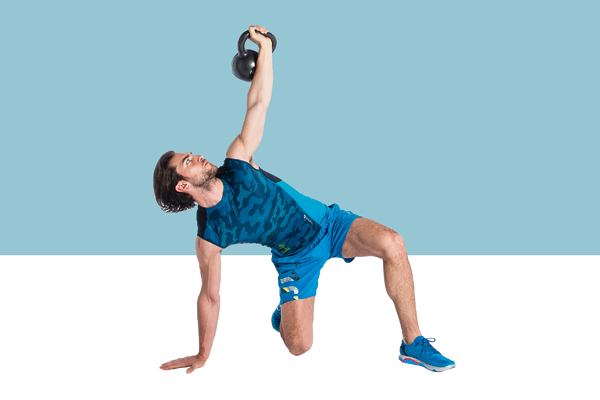
Keeping the weight elevated, push up with one leg and sweep the other underneath, rising on to the elbow of your free arm.

Extend your free arm fully and shift your weight forward to stand up.
Performance upgrade
This is a test of co-ordination, so you’ll want to practise the movement itself. "Do it in parts, breaking down the Turkish get-up into phases and practise each phase before putting them together in the full movement," says Lightfoot. "Performing lots and lots of reps is key."
Work on improving your upper-body mobility and stability. "Add the suitcase carry and Pallof press to your workouts," says Lightfoot. For the suitcase carry, just carry a heavy kettlebell in one hand, using your obliques to stay upright. For the Pallof press, stand side-on to a cable machine and grip the cable in both hands, resisting the rotation as you ‘press’ it forwards.
Struggling with stability in your hips? "Try the bird dog," suggests Lightfoot. "Get on all fours, then bring up one arm and one leg, keeping your torso parallel to the floor. Also, try weighted floor bridges."
Explosiveness
Broad jump
"The broad jump might be simple but it’s an awesome measure of explosive leg power," says strength coach Tom Eastham of Easthams Fitness. "One of the NFL annual combine tests is the broad jump." If it’s good enough for them…
The standards
- Excellent: 250cm
- Good: 230cm
- Average: 210cm
- Below average: 190cm
How to do it

From a standing start, bend your knees slightly and jump as far as you can.
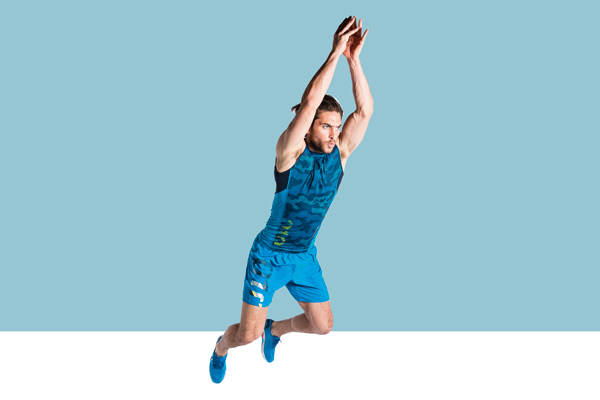
Swing your arms for momentum. Land softly to reduce jarring.
Performance upgrade
"If your training is mainly static, you’ll need to improve your body’s ability to be a 'spring'," says Eastham. "However, if you have a spring-based training background, work on improving your strength. Explosive power requires a balance between spring and static capabilities. If you’re lacking in one or the other you won’t achieve a broad jump that’s anywhere near your full potential."
"Anything explosive will improve your broad jump, and doing vertical jumps is one of the best places to start," says Eastham. "Squat slightly and jump up as high as you can, making sure you swing your arms overhead at the same time because they provide at least 10% of your power." You’ll only need to do five sets of three twice a week to see improvements.
Stretching the key muscles involved in jumping will be of huge benefit to you. "Your hip flexors, quadriceps and hamstrings all work hard to initiate the movement, and the more efficient they are at moving, the better they are at relaxing or switching on when required," says Eastham. "Static stretching before and after a workout is a good initiation for dynamic movement and mobility drills because it increases your range of movement permanently."
Endurance
Forget the knee-ruining floor-pound of a 10K run and do it on the rower instead, where it becomes a supreme test of will. "You’ll be constantly fighting the urge to quit," says Gym Jones-certified trainer Pieter Vodden. "You have to hold a consistent pace, focusing sufficiently to stay on target but relaxing enough to avoid tension and unnecessary fatigue."
The standards
- Excellent: 38 minutes
- Good: 40 minutes
- Average: 45 minutes
- Below average: Over 50 minutes
How to do it
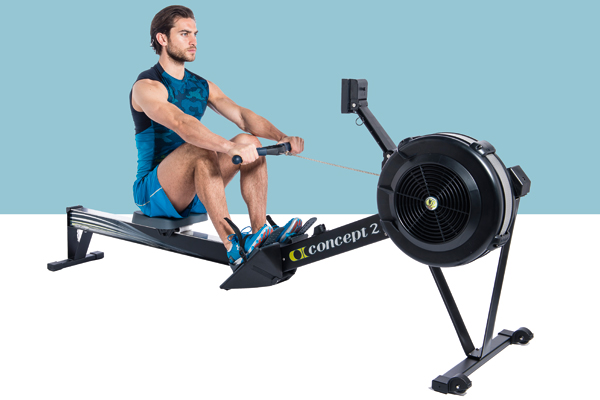
How to do it
Start with the seat close to your heels, holding the handle with straight arms. Keeping your back straight, drive through your legs. Lean back slightly and pull the handle close to your sternum. Reverse the move – arms first, then legs.
Performance upgrade
The key to improving your time in this punishing endurance test is to practise doing long intervals. "Try rowing five sets of 1,000m at 1min 55sec/500m pace with a 1:1 work-to-rest ratio," says Vodden.
Build your aerobic capacity so you can tolerate long periods on the rower. "Do 60-minute rows," says Vodden. "If that’s too daunting, break it up into three 20 minute blocks. Pro tip: get a good podcast."
Stay focused and avoid distractions. "It’s just you and the task – don’t look at what others are doing," says Vodden. "Pick music that both engages and inspires you, keep your eyes off the girls in Lululemon pants, and row."
"Row more," says Vodden. "If you want to get good at anything you have to do it a lot." Work rowing into your routine. "Warm up and warm down on the rower. Do finishers and recovery days on the rower. Row. Row. Row!"
Power Endurance
The speed at which you can run a mile (1.6km) is a great indication of your power endurance. "A flat-out mile recruits a large number of muscle fibres at close to maximal rate for a sustained period of time," says George Anderson, a veteran marathoner, running coach and motivational speaker.
The standards
- Excellent: 6min
- Good: 7min
- Average: 8min
- Below average: 9min
How to do it

To ensure you run as efficiently as possible, try to maintain an even stride length and keep your torso upright. If you do it on a treadmill, use a 1% incline to mimic road running.
Performance upgrade
"If you want to get faster and stronger and smash your best mile time, head for the hills," says Anderson. "Find one that’s steep enough to challenge you but not so steep that you have to change your technique. Then drop the hammer and run up the hill for 60 seconds. Walk or jog back down. Repeat for five to eight intervals."
Running 400m repeats every four minutes will improve your time massively. "Run 400m at about 90% effort, then walk around to keep your legs moving until the four-minute timer starts shouting at you and you begin your next interval," says Anderson. "Aim for five to ten of these or until you’re taking longer than three minutes to complete a lap."
"A strange thing happens when you practise running fast: you get faster," says Anderson. "Warm up thoroughly, then go full-tilt for 30 seconds. Take a three-minute recovery before going again for another sprint. Doing five to eight of these once a week will slice noticeable chunks off your mile time."
Not surprisingly, the hardest part of a mile is the end when you’re most tired, so train for it. "Head out for a long run (one hour or more), then finish with a series of five one-minute intervals with two minutes of recovery," says Anderson. You might not threaten Roger Bannister, but you can certainly boost your performance from terrible to respectable.
Strength
The front squat is excellent for leg and core strength. "It’s safer than a back squat because you can’t load as much weight on the barbell, and it’s easier to escape if it goes wrong," says Rob Shaul. "It’s also good for identifying imbalances between upper-body and lower-body strength – your bench press and front squat should be roughly the same."
The standards
- Excellent: 1 rep at 1.75x bodyweight
- Good: 1 rep at 1.5x bodyweight
- Average: 1 rep at bodyweight
- Below: average 1 rep below bodyweight
How to do it
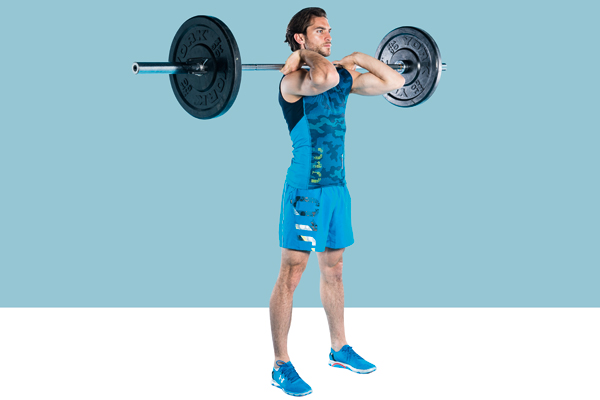
Stand with your feet shoulder-width apart, resting the weight on the front of your shoulders, elbows pointing forward. Squat until your thighs are at least parallel to the floor. Drive back up through your heels.
Performance upgrade
To get the hang of the form, start by doing goblet squats. Hold a heavy dumbbell under your chin with both hands on one end as if it were a heavy drinking vessel, and perform a squat. "Do six rounds of four reps each," says Shaul. "Increase the load each round until performing four reps is hard but not impossible."
Remember that your legs are always stronger than your core. "To keep your core strong, take a deep breath through your mouth and tense your stomach muscles at the top of the lift before dropping into the squat," says Shaul. "Hold your breath as you drop into the squat and for the rest of the move, all the way back to the top."
Poor wrist flexibility? Don’t hold the barbell in a full four-finger grip. "Place your index and middle fingers on the barbell and wrap your elbows around it," Shaul says. "As long as the barbell is resting in the 'rack' position on your shoulders, and your elbows are up and pointing straight ahead, you don’t need a full grip."
Agility
Starting on your back before flipping on to your front for a 20m sprint is a great measure of agility. You’ll use a range of muscles, and any clumsiness will add seconds to your time.
The standards
- Excellent 3.5 seconds
- Good 4 seconds
- Average 5 seconds
- Below average 6 seconds
How to do it
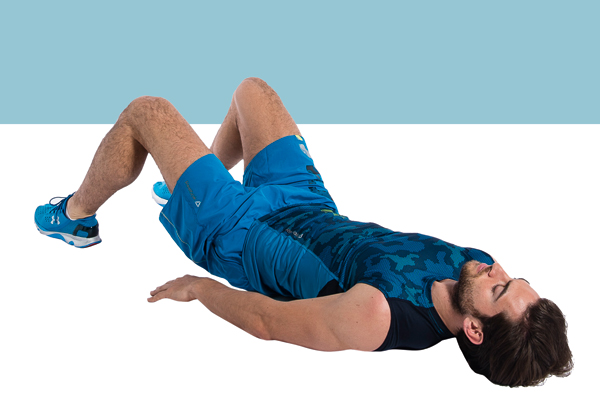
Lie on your back at the start.

Flip on to your front and get up as quickly as possible.
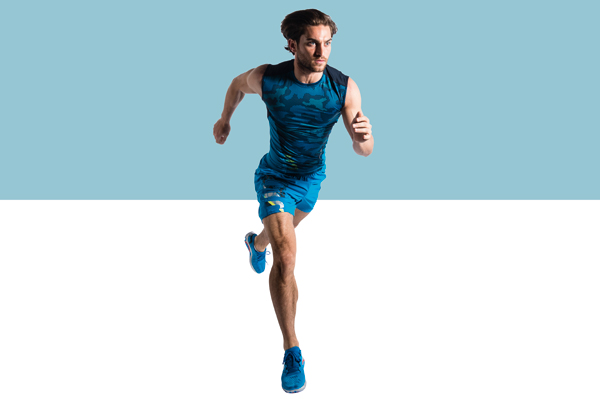
Sprint to the 20m marker.
Performance upgrade
"Train for both elements of this test separately," says Sean Lerwill, an ex-Royal Marine physical instructor turned personal trainer. "A good session would be sets of five 20m sprints with full recovery between reps. For the get-up, practise getting up from lying down as fast as possible in sets of three to six. Do three to six fast reps, then rest for two to three minutes and do it again."
Make sure your form is right. "Anything you do repetitively becomes ingrained, which is great – as long as your technique is perfect," says Lerwill. "Get someone to video you, and analyse your technique to make sure it’s right. Then practise the move over and over again."
To improve your speed, you need muscles that generate power quickly, so they need to be strong. "Training your legs with squats, deadlifts, plyometric jumps, single leg-hops and other sprint-specific exercises is a great way to improve the drill," says Lerwill.
Relax. "Many people try too hard during physical tests," says Lerwill. "Although it’s often necessary to be pumped up and to give it everything, there are times when the opposite is best. For some it can be the missing link to success."
Between 2014 and 2015, Andre Jackson was the web editor of Men’s Fitness UK, which predated and then shared a website with Coach. A love for climbing ropes and boarding slopes, he doesn’t have the most traditional of workout plans but he’s obsessed with finding out how much protein he can get from everything. His favorite gym move is double wave battle ropes, his favorite sports are football and snowboarding, and his personal best is conquering a V6 bouldering climbing wall.
